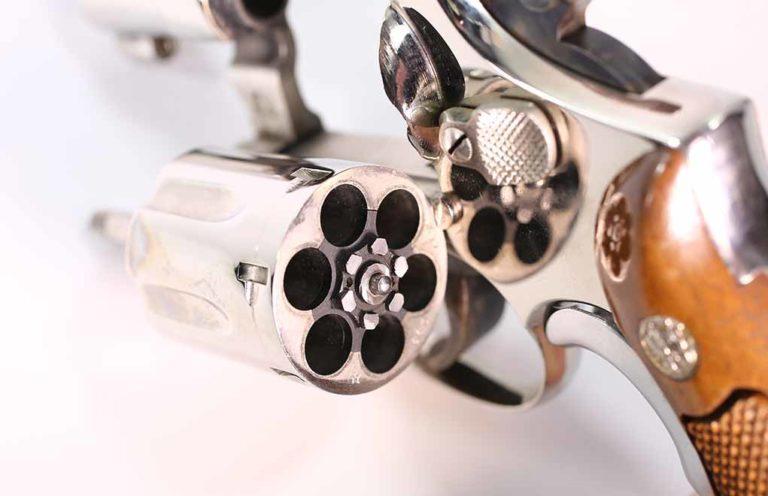
Made to exacting standards and accurate enough to spit a hair, classic snubbies and other concealed carry revolvers still hold their own.
There was a time when dinosaurs walked the earth. And a time when revolvers were the most common carry gun. I’m not saying there was any overlap between the two, but some want to push revolvers back in time enough to do that.
Revolvers do have the disadvantage of not holding as many rounds as pistols do, but by the time you make a pistol as small as a revolver, the advantage is not so great. What revolvers do have as advantages are the uniformity of the trigger pull, and the ease of getting past a dud round. If you need your revolver to fire, simply stroke through the trigger and repeat as necessary.
Back when we mostly carried revolvers, the baseline gun was an S&W K-Frame in one caliber, barrel length, finish or another. The K-Frame is the .38 Special /.357 Magnum six-shot revolver, whose basic design and dimensions were laid out by S&W before the Rough Riders charged up San Juan Hill. No kidding.
I have used a bunch of different K-Frames through the decades. The shop kept a 2-inch blued, round-butt M-10 (.38 Special) in a holster on the wall, as a shop gun “just in case.” I took that one to an indoor winter action league, and shooting it against a bunch of heavy-barrel .38s, I cleaned up. The trick there was the faster reloading by handling a compact revolver, compared to the 6-inch-barreled ones the others were using.
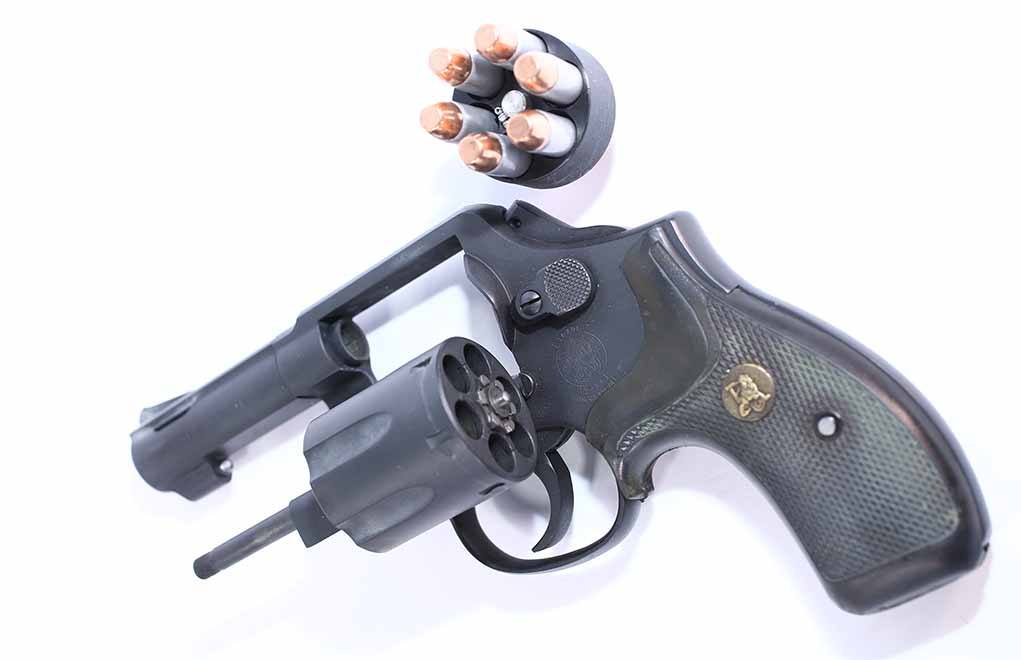
At the other end, I picked up a police trade-in M-19 (.357 Magnum) and rebuilt it as a bull-barreled PPC gun, complete with rib and adjustable sight. That one I shot in the local Sheriff’s Department indoor league, for a 596 average. I know PPC may not seem all that big a deal as far as shooting goes, but you will learn good double-action trigger habits shooting it.
For IDPA competition, I have a 4-inch nickeled M-19 that I carry underneath a Harris Tweed jacket. Hey, I figure that if I must carry concealed for a competition, I’m going to look like I would on the street. I don’t walk around with a safari vest on when I’m walking the dog around here, why would I do it in a match that is supposed to be real-life training?
But my favorite carry revolver is a 2-inch nickeled M-15, with a square-butt frame. It’s a blast from the past, a classic iron, and a solid and dependable tool.
Falling For An M-15
The M-15 is the K-Frame with adjustable sights. Originally after WWII it was known as the K-38 Masterpiece. The 4-inch guns were the Combat Masterpiece, and the 6-inch guns were the Target Masterpiece models. When S&W overhauled the model designations in 1957, the 6-inch guns became the M-14 and the 4-inch guns became the M-15. After that, all bets were off, as S&W varied the barrel lengths in all their models, so you could find M-14s and M-15s with 2-inch, 4-inch and 6-inch barrels.
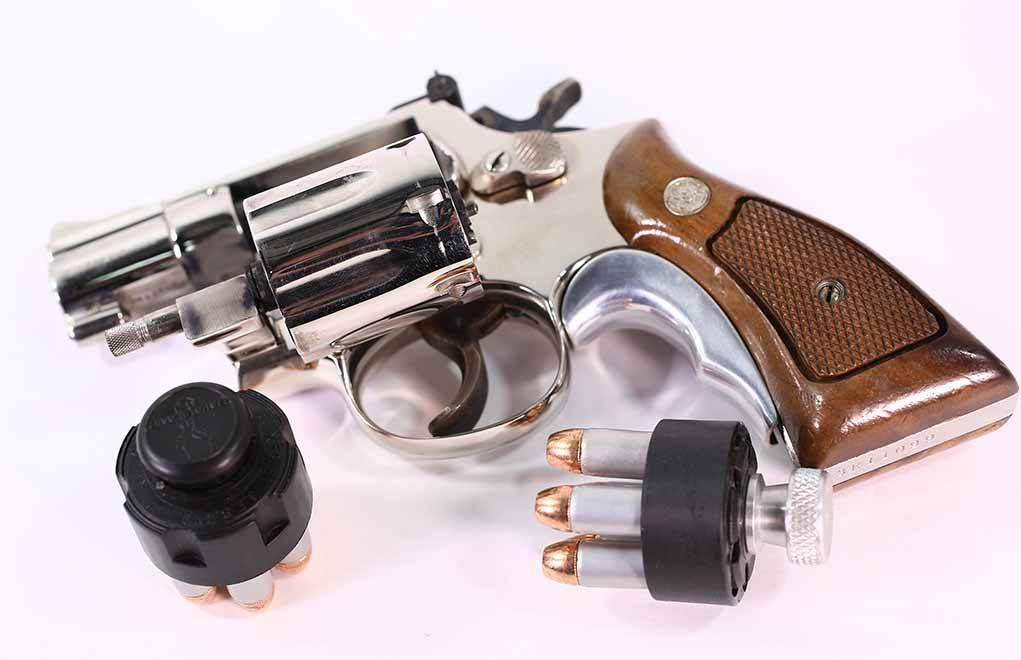
Mine was sitting in the safe of a gun shop that I would drop in on from time to time, while driving from one range or shooting event to another. I saw it and I liked it, but I had no real need for it, so I left it. A couple of months later when I dropped in, it was still there, so I figured I was being given a sign and snapped it up. A quick serial number check uncovered that it had left Springfield, Massachusetts, in 1971. That was still in the post-war years when they had a factory full of old-timers who knew how to hand-build revolvers.
The K-Frame, for those who have only ever fired a handgun composed of polymers, is a six-shot double action revolver. The cylinder opens to the left, and the cylinder rotation is counter-clockwise. The ejector rod, the rod out in front of the cylinder, is long enough on the 4-inch and longer models, that the empties will be fully extracted. On the shorter-barrel models, the case won’t be fully extracted, and you must be sure and push the rod briskly enough to ensure their departure.
Take Another Spin With Our Revolver Content:
- Double-Action Revolver: Secret To The Trigger
- 5 Excellent Double-Action Revolver Options
- FBI Handguns: Revolvers of the Past
- Colt Python: The Cadillac Of Revolvers
- First Look: Colt Night Cobra Revolver
The ejector rod is also the assembly that holds the cylinder in place. The rear stub of the rod, visible in the center of the ratchet and extractor star, is spring-loaded and rides in a hole drilled in the frame. The front end of the rod engages a spring-loaded plunger pinned to the barrel, and thus the cylinder is held, fore and aft, on-axis.

This is important to know because it accounts for one of the other attributes of the revolver: accuracy. Smith & Wesson and other revolver makers expended (and still do) a great deal of effort to ensure that each charge hole is drilled straight and on-center with where the barrel is going to be. Then, on the S&W revolvers, with the cylinder rotating around a pin that is held at both ends, each cartridge is centered-up to the barrel as precisely as man can make it.
And how precise? Some years ago, in a TV shooting session, I was using the M-15 as a prop and demo gun. I commented to the crew about how a snub-nosed revolver was just as accurate as a revolver with a longer barrel — it was just the sight radius that made it more difficult to shoot. But, with practice, you could get hits at distance. “How far can you hit?” came the question from behind one of the cameras. “Oh, 50 yards, maybe even 100 yards.” There was a brief pause, followed by, “Prove it.”
So, we set the cameras up, and by dint of shooting at an angle across the range, I could get a steel silhouette 100 yards from where I was standing. We also had to arrange things so the light was good, the background was clean — you know, camera stuff.
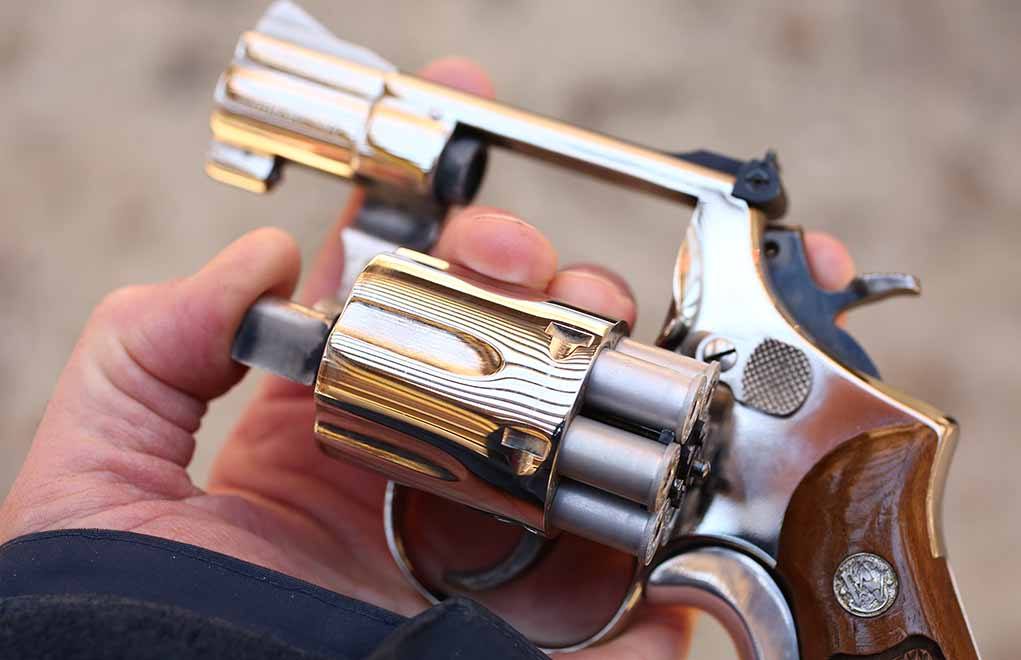
Ready to go, I loaded up, and six shots and six steel-ringing hits later on the steel 100 yards away, everyone was happy. Yes, first take.
That indoor league I mentioned earlier, the one I won: The times for the shooting strings were tight. That 2-inch barreled M-10 was slick, but no more slick than the heavier guns I was up against. What made the difference were the reloads. With fast reloads, I could get off all of the planned 48 shots of the course of fire, and all of them aimed. The heavier, bulkier guns handicapped their owners, and some of them were left with shots unfired. I figured every shot they didn’t get was a potential five points (of the 240 total) that counted for me. If I had a potential 240 points, but they could only count on a potential 220, for example, I was ahead right from the start.
The Achilles Heel Of The Wheel
Now, if you are expecting to be reloading and need a lot of ammo in a gun fight, then you really ought not to be using a revolver. But, if you are going to be reloading, the one that reloads the quickest is an advantage.

My M-15 left the factory with a square butt. That wasn’t uncommon back in 1971, or for years afterward. For some applications a round-butt revolver was the preferred choice, but even for EDC, a square butt revolver works just fine. With the correct and comfortable holster, the square butt is not going to be any more difficult to conceal than the round-butt model. And for some hands, the square is going to be easier to shoot.
One detail that revolvers makers back then — and most grip makers, for that matter — didn’t deal with, was the gap behind the trigger guard. The gap, which looks good as a machined product, allows your second finger to ride up as high as the index finger, and getting your fingers out of alignment is not good. It also puts your finger in the path of the rear of the trigger guard when the revolver recoils. So, a hard-kicking load not only is hard to aim (finger mis-alignment), it makes you pay for it with a bruised finger.
The solution for many back then was a custom set of grips. But there was another option, called the Tyler T-Grip. This was a cast metal part that fit behind the trigger guard. It had a set of clips that went alongside the frame at the grip area, and when you tightened your grips back on, the adapter was held in place.

It filled the gap behind the trigger guard, and since it was metal, it could be made blued or nickeled. Since my M-15 sports a high-gloss nickel finish, I opted for a Tyler T-Grip that was the same.
Oh, and the gap behind the trigger? It takes on even more importance when you consider how nice classic revolver triggers can be. Not all were great, but many were. I was just as the range recently, and a fellow gun writer was there. “You’re packing a snubby?” I just drew, unloaded, and handed it to him. He closed it, and stroked through the trigger. With a smile he asked, “How much polishing did you do?” “None.” And I haven’t seen any signs of polishing on the inside, so it came from the factory like that. As I said, back in 1971, the S&W assemblers were good at making smooth, light and clean double-action triggers.
“But, real men don’t carry a lowly .38 Special; they carry a .357 Magnum.”
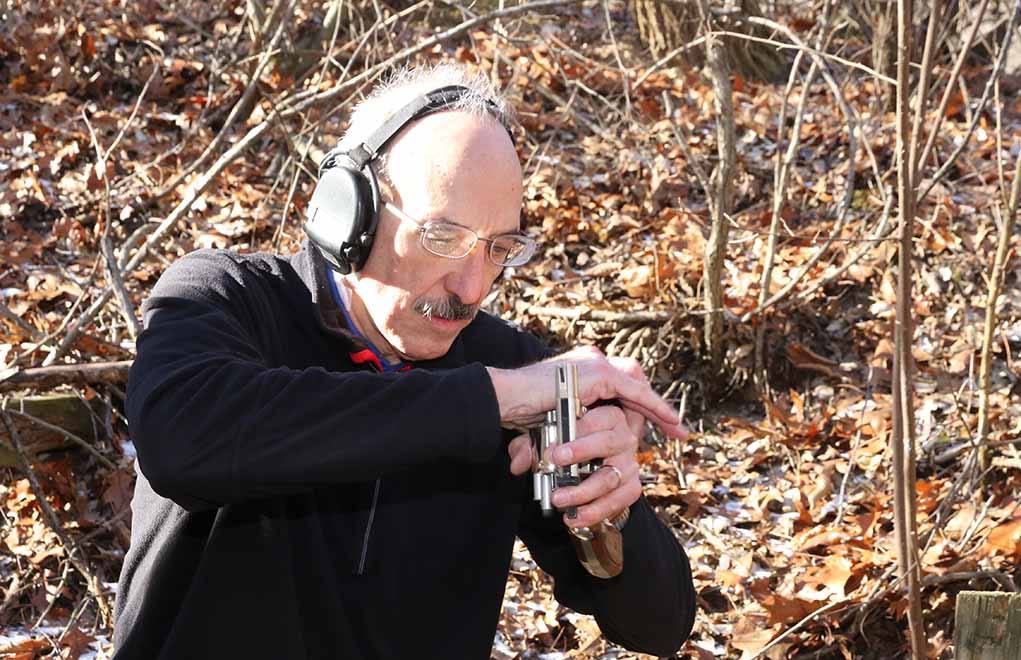
Hmm, perhaps some do. What I do know is that the performance difference between a .38 Special+P load, and a .357 Magnum load, out of a snub-nosed revolver, is not worth the blast and recoil. In some loads, shooting a .357 out of a snubby is like holding a flash-bang on the end of a short stick. I’ve shot some where the flash was so pronounced I could feel it as heat on my face for a split second. No thanks.
So, six .38 Special+P rounds in the cylinder, and two speedloaders with a dozen more, is a comforting carry load to leave the house packing. My only regret is that in the possible future event that I have to defend myself, it will languish on an evidence room shelf until the case is wrapped up. It may get a regular stream of visitors who all dry-fire it to feel what a real trigger is supposed to be like. It might end up with an officers initials or badge number scratched into the sideplate. (I never understood that; there’s a serial number right there on it.)
But sideplates can be polished and re-nickeled. What matters is surviving to the future time when you can start calling refinishers to get the work done. And this is just the tool to do that. And as a curious aside, I’ve named a bunch of the old-hands, the reliable firearms that I’ve acquired through the decades. This one still lacks a name.
Editor's Notes: This article originally appeared in the Concealed Carry 2019 issue of Gun Digest the Magazine.

Next Step: Get your FREE Printable Target Pack
Enhance your shooting precision with our 62 MOA Targets, perfect for rifles and handguns. Crafted in collaboration with Storm Tactical for accuracy and versatility.
Subscribe to the Gun Digest email newsletter and get your downloadable target pack sent straight to your inbox. Stay updated with the latest firearms info in the industry.

![Best Concealed Carry Guns In 2025 [Field Tested] Wilson Combat EDC X9S 1](https://gundigest.com/wp-content/uploads/Wilson-Combat-EDC-X9S-1-324x160.jpg)


![Best 9mm Carbine: Affordable PCCs [Tested] Ruger Carbine Shooting](https://gundigest.com/wp-content/uploads/Ruger-Carbine-Shooting-100x70.jpg)
![Best AR-15: Top Options Available Today [Field Tested] Harrington and Richardson PSA XM177E2 feature](https://gundigest.com/wp-content/uploads/Harrington-and-Richardson-PSA-XM177E2-feature-100x70.jpg)
